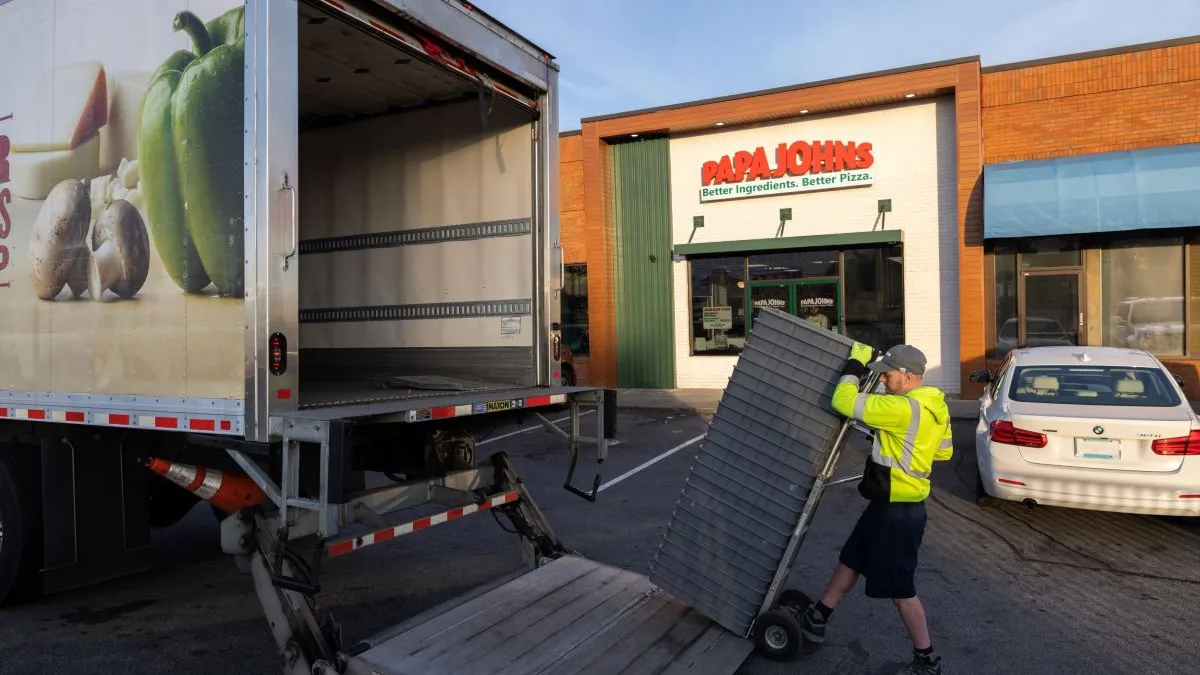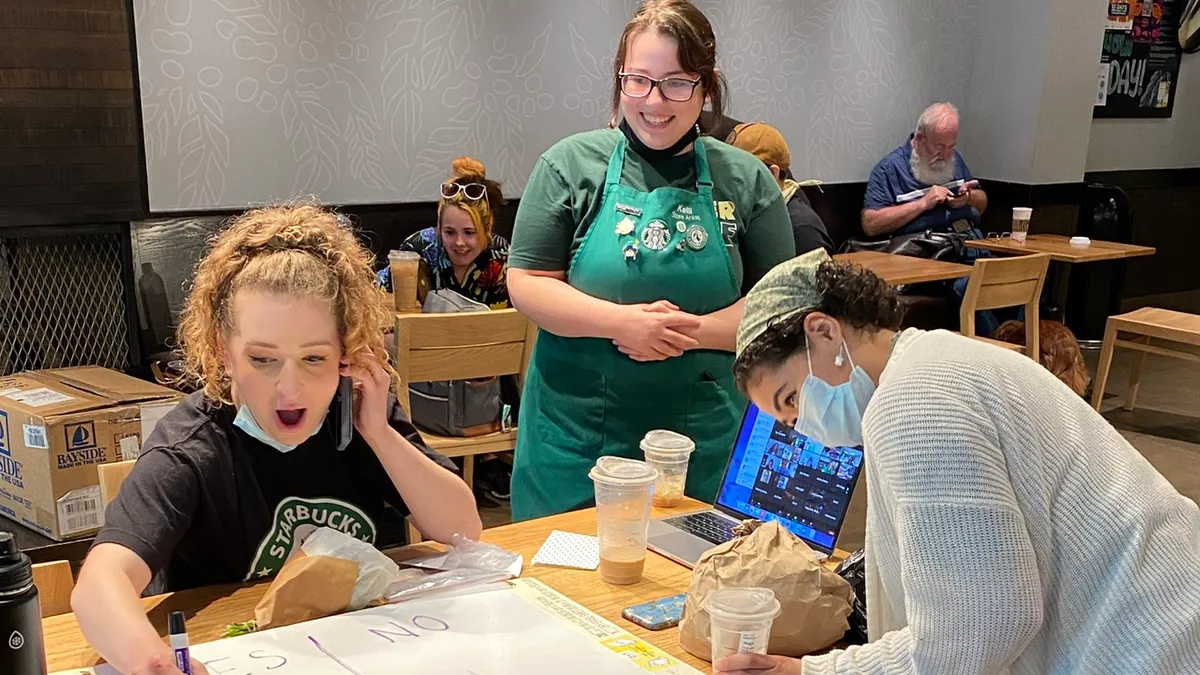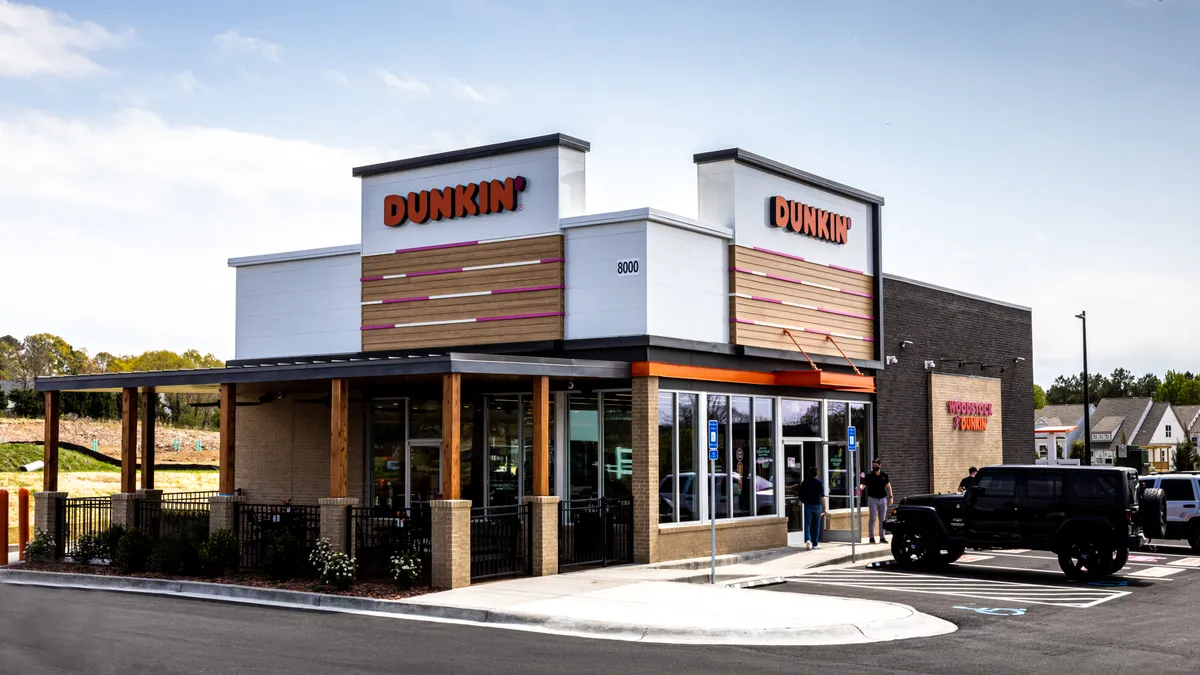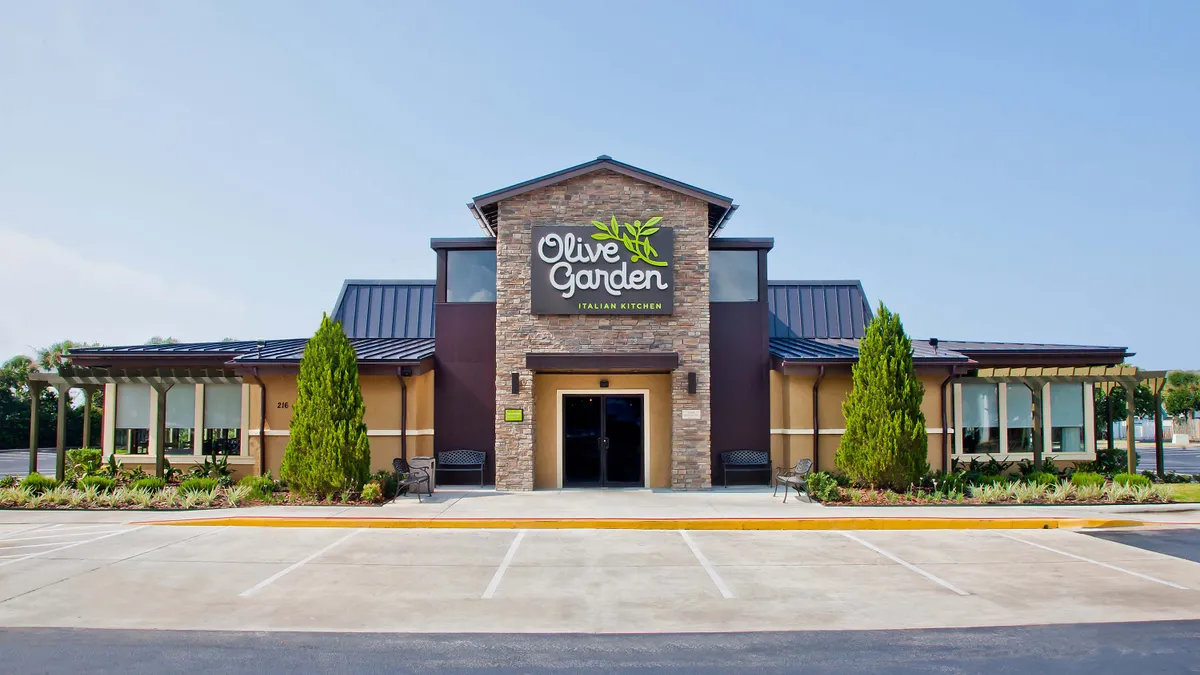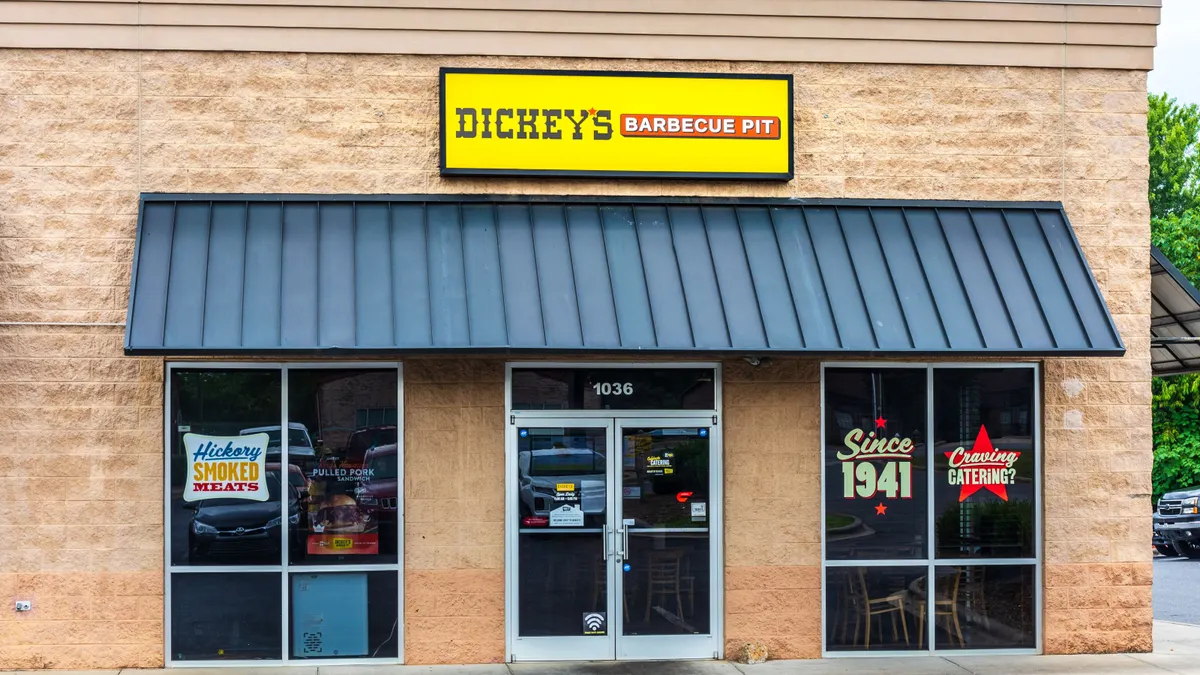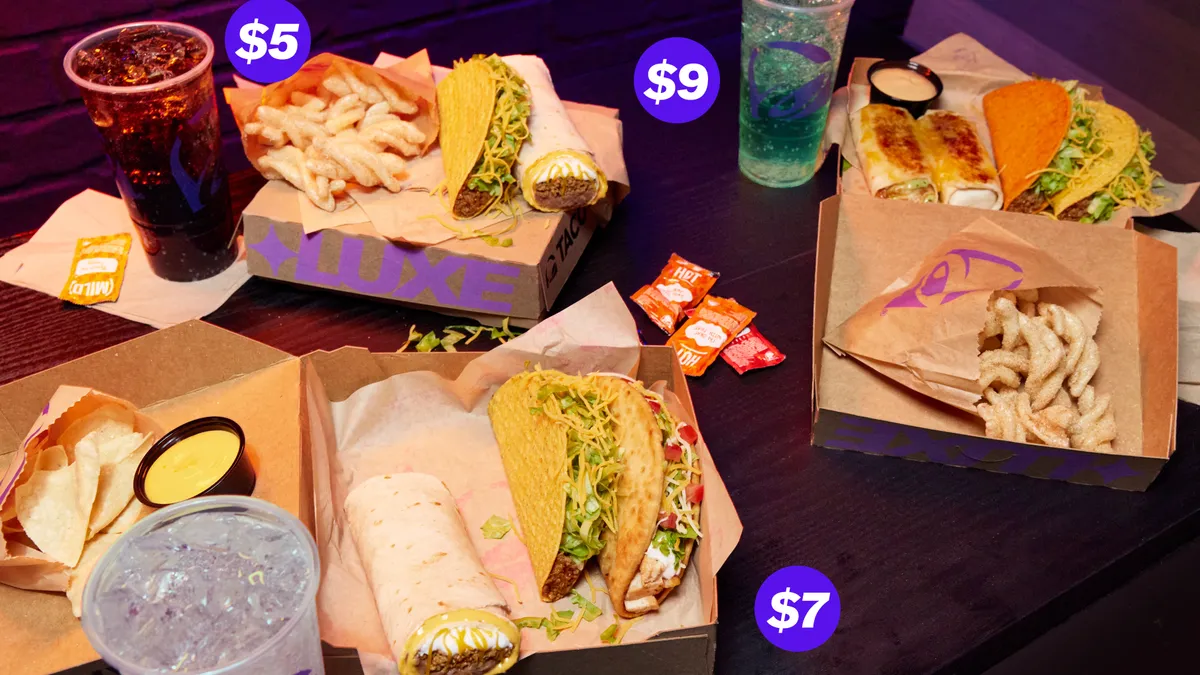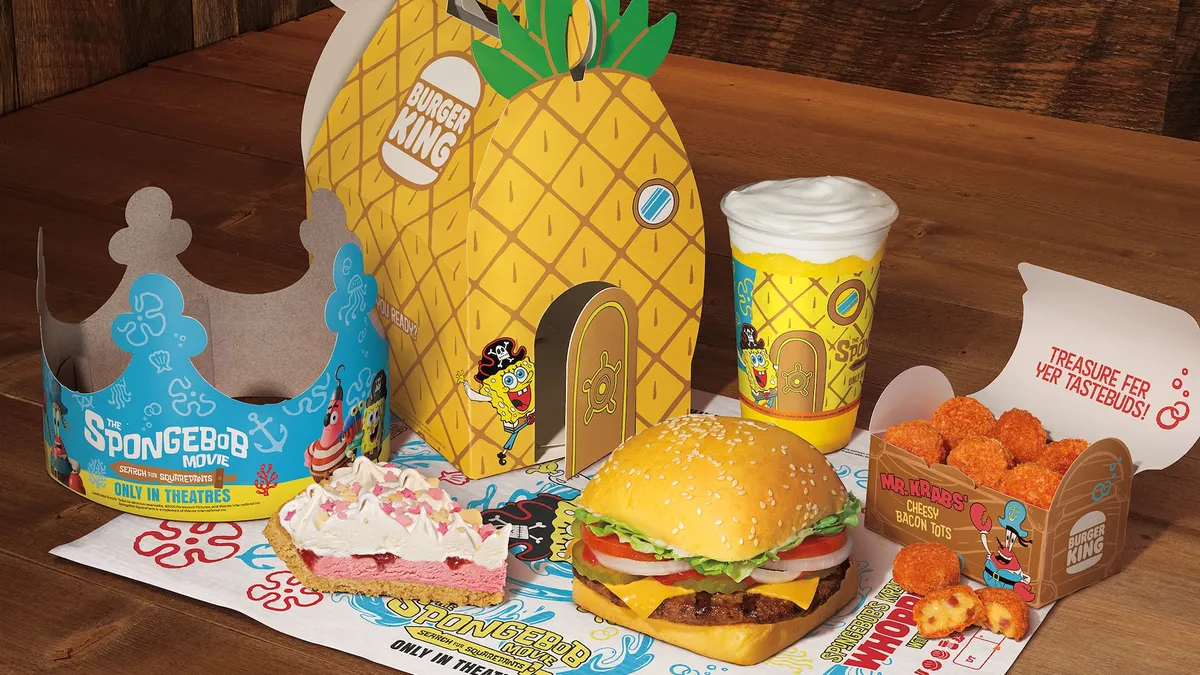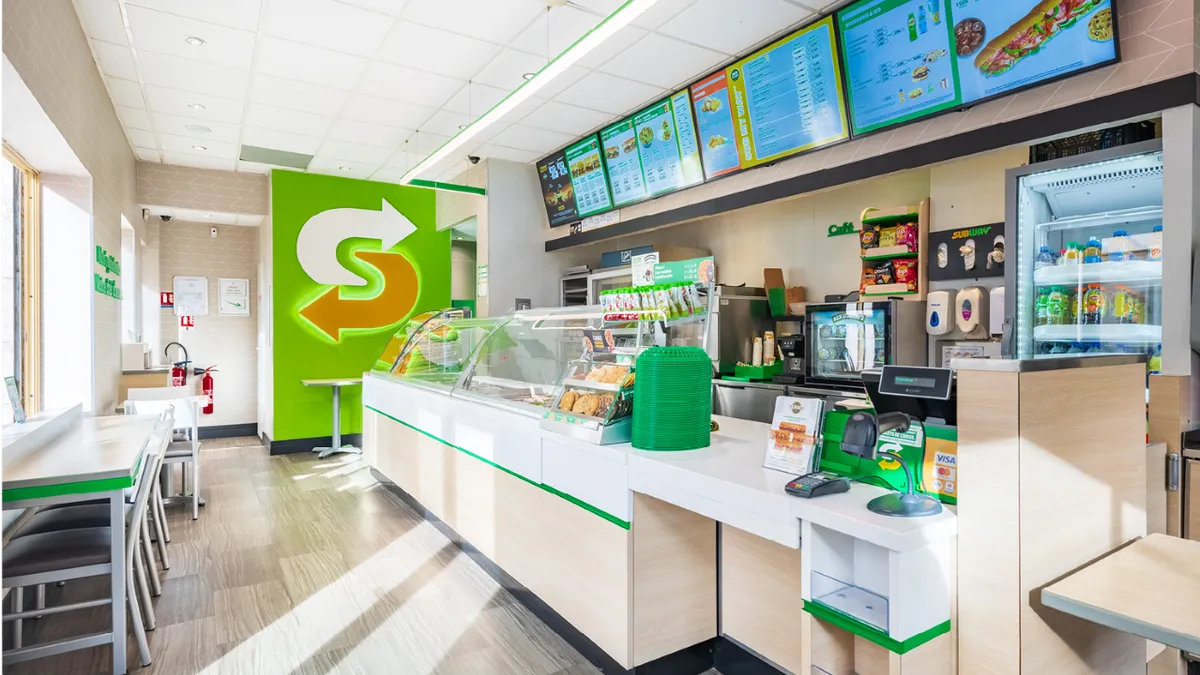Papa Johns CEO Todd Penegor told investors last month that the pizza chain was a “superregional brand” in the U.S. By that, Penegor meant that for a national chain, Papa Johns’ strongholds are remarkably concentrated. While the pizza chain is the fourth-largest in America, it is either the dominant player or the runner up in 11 of its top 15 markets. Under Penegor, the brand is looking to cement that advantage and conquer adjacent markets.
Papa Johns has “a ton of infill development opportunities across the markets where we already have a strong brand presence,” Penegor said.
Papa Johns’ overall market position is weak: same-store sales have fallen for several quarters, and as of the end of 2024 its menu pricing had outpaced inflation 6% over two years. This is a potentially significant weakness at a moment when consumer price sensitivity — and credit card defaults — are rising.
Peter Saleh, an analyst with BTIG, wrote in a note after the investor conference that structural market problems like price increases have limited the company’s success in recent quarters, and that the pizza chain is mired in “perpetual turnaround efforts.”
Saleh said the brand’s development pacing has been lackluster of late, as well.
So how can the fourth-place pizza brand in America go from an irregularly dispersed, superregional player to a top chain at the national level?
Ravi Thanawala, Papa Johns’ CFO, said that driving individual transactions and increasing market share is key to improving the brand’s development value proposition.
“Transactions is [sic] the lifeblood for development opportunity for this brand,” Thanawala said. Many of the brand’s strongest markets are dominated by its corporate-owned locations, and Papa Johns is also looking to selectively refranchise in those markets, Thanawala said.
This would give Papa Johns the chance “to scale up existing franchisees that really have that growth mindset,” Penegor said. “[It] gives us a great opportunity and an entry point to bring in some new franchisees.”
Menu simplification and restrained pricing, as Restaurant Dive reported last year, are key to the brand’s store-level changes. Saleh said the chain was also looking to standardize equipment — the chain uses five different ovens from three different manufacturers in the U.S.
“This leads to different oven temperatures, cook times, inconsistent standards and quality, so standardizing the oven equipment and procedures seems like a worthwhile priority,” Saleh wrote. “Lack of standardization here is a self-inflicted obstacle, and we're dismayed a basic operating standard like this would exist, and not have been addressed earlier.”
Changing unit economics would improve value proposition
To improve the economics of new stores— the brand’s stores have an AUV of about $1.2 million according to its franchise disclosure document — Papa Johns is trying to control and reduce buildout costs. Penegor said the brand has managed to get development costs to roughly $500,000 on average, but that the company isn’t done with trying to reduce build costs.
If such changes improve unit economics, and thus the attractiveness of franchising with the brand, Papa Johns will focus on major markets where it’s a significant player but still in fourth place, Penegor said, like Dallas, Houston and Los Angeles.
“We know we can invest to start to improve and steal some share in those markets,” Penegor said.
Even within its top 15 markets, concentrated primarily along the East Coast, Papa Johns still has room to grow. This investment in markets where Papa Johns has a significant presence could allow the brand to turn those into “fortresses.”
“There's a tremendous amount of infill opportunities to leverage existing franchisees,” Penegor said. “Because if we win in markets, we'll win in regions, and then ultimately win in countries and we'll win globally.”
Joe Sieve, Papa Johns’ chief restaurant and development officer, expanded on this strategy, noting that winning one market opens adjacent ones, and said the company was targeting specific markets for infill development with existing franchisees. Sieve said this was a departure from a previous focus on signing big development agreements for new markets and will slow down the company’s market entry to some extent.
This growth strategy could require labor intensive, geographically limited marketing campaigns. Thanawala said that the brand has to act like a scrappy challenger to win consumers.
“[In] our best markets, our franchisees are engaged in the restaurants, they're out in the communities, they're going to the schools, they're going to the apartments, they're going to the offices, they're putting [up] the door hangers. They're going back to the old school stuff to go fight for transactions,” Thanawala said.


